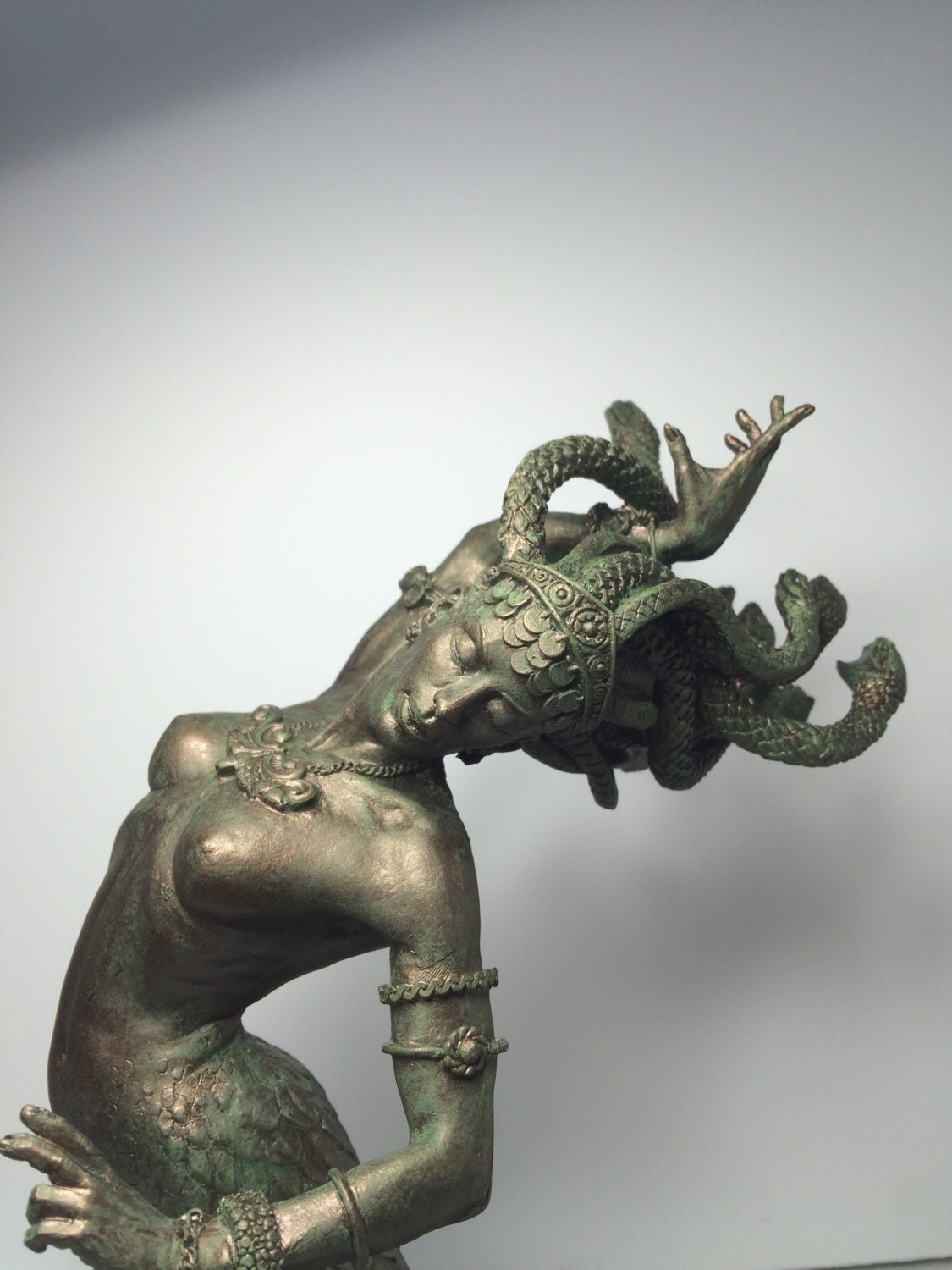
Medusa’s death implicates two figures, the hero Perseus and Athena, who is still not satisfied with the Gorgon’s punishment. 450–40 BCE, via The Metropolitan Museum of Art, New York

Medusa’s Death Perseus beheading the sleeping Medusa, attributed to Polygnotos, ca. Medusa becomes a monster with snakes for hair, a monster so hideous that turns whoever looks at her into stone. Nevertheless, the punishment remains the same. In an alternative version of the story, Athena cursed Medusa after she claimed to be more beautiful than the Goddess. The Goddess, unable to exact revenge on an immortal for this sacrilege, directed her anger towards the victim. While she was still human, Poseidon raped her inside Athena’s temple.

In the canonical myth, Medusa becomes a monstrous being as a result of divine punishment. Surely this was the reason Perseus chose to kill her instead of her sisters. In turn, they had three daughters known as the Gorgons. Together they produced Medusa’s parents, Phorkys and Keto (a word used to describe sea monsters or large sea animals). Īccording to Hesiod’s Theogony, Gaia (Earth) gave birth to Pontus (Sea) parthenogenetically. To better understand what the Medusa meant in antiquity, we have to read the myth of Perseus and Medusa. Who Was Medusa? Medusa by Caravaggio, ca. This means we are witnessing different scenes of the myth at once, which is a common trait in Greek art. Medusa’s offspring were not born until after her death but her mother and children appear alive next to each other. This is a conventional pose known as the Knielaufschema. Her legs and arms are bent in a pinwheel fashion to indicate that the figure is running. It almost looks as if she stretches her head to take a better look at the worshipper approaching the temple. Medusa is the uncontested center of attention and the most ‘alive’ of all figures. There are also indications of wings just like other depictions of Medusa at the time, mainly found in pottery. Snakes extend from the Gorgon’s shoulders while others form a belt around her waist. The ornamentation is also quite impressive. She is carved in bold shapes with clear indications for her clothing and facial attributes. The Medusa is not only the largest of the figures but also the most detailed one. The Medusa The Medusa at the Temple of Artemis in Corfu, in the Archaeological Museum of Corfu We don’t know who are the other smaller figures, as there are no definitive elements proving their identity beyond doubt.

He is depicted in 3/4 holding a thunderbolt and ready to strike his enemy. The standing bearded figure on the right behind the feline is believed to be Zeus. On the far sides of the pediment, there are smaller sculptures of gods fighting titans.ĭetail from the pediment of the Temple of Artemis Next to them are two large felines with frontal heads. On the right is Chrysaor and on her left Pegasus (more on them below). Three-dimensional reconstruction of the temple in color, via Diadrasis: Creative & digital productions at the Archaeological Museum of Corfu The monumentality (ca 2.9 meters tall!) of the conception must have been a unique sight for the time. In general, the figures are smaller on the edges and grow in size the closer they get to the center. The Medusa – one of the three Gorgons, the other two being Stheno and Euryale – appears in the middle. The pediment is by far the most famous part of the Temple of Artemis. The Pedimental Sculpture West pediment from the Temple of Artemis in Corfu, in the Archaeological Museum of Corfu, via the Greek Ministry of Culture


 0 kommentar(er)
0 kommentar(er)
